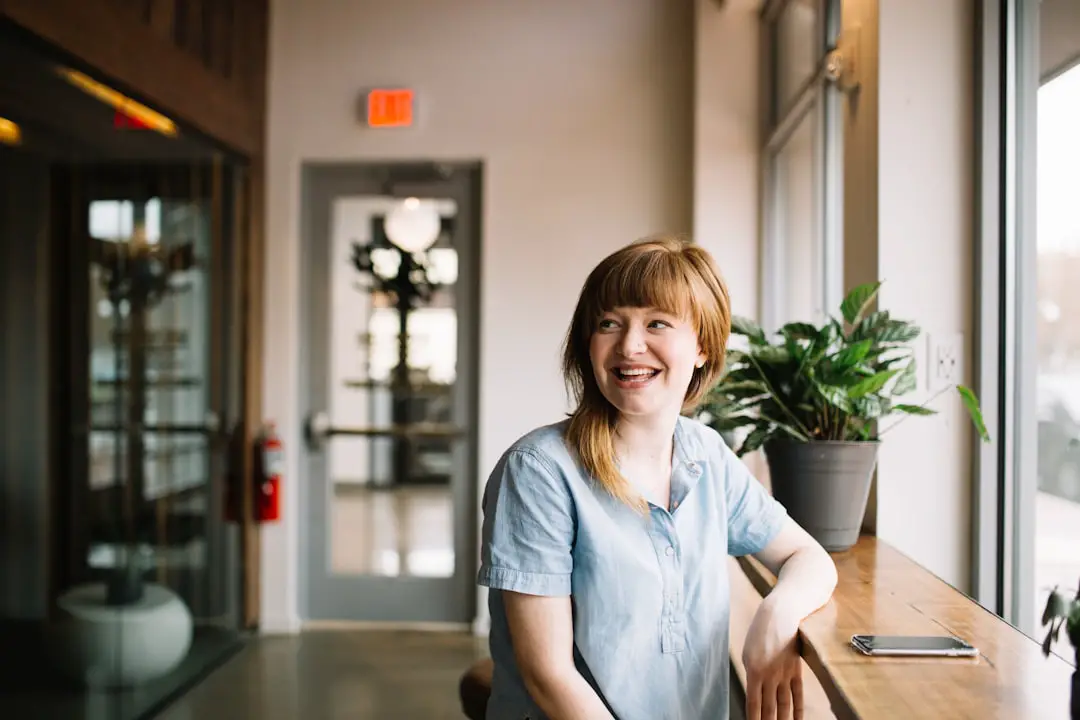Support our educational content for free when you purchase through links on our site. Learn more
Community gardens are often touted as idyllic spaces where neighbors connect, grow fresh food, and foster a sense of community. But, as with any shared endeavor, there are challenges. While the benefits are undeniable, it’s crucial to acknowledge the potential downsides before diving headfirst into the world of community gardening. Think about it: Would you be happy to share your prize-winning zucchini with your neighbor, or are you more of a “my-garden-my-rules” type? We’re not saying community gardens are bad, but understanding the potential pitfalls can help you make informed decisions and navigate the challenges that might arise.
Quick Answer
Here’s a quick summary of the downsides to community gardens:
- Conflicts and communication breakdowns: Disagreements over gardening practices, plot assignments, or even personality clashes can arise, leading to frustration.
- Maintenance and labor: Maintaining a community garden is a shared responsibility, requiring dedicated volunteers or a well-organized system.
- Funding and resources: Securing funding for tools, seeds, and infrastructure can be a challenge, especially for smaller gardens or those with limited resources.
- Theft and vandalism: Community gardens can be targets for theft and vandalism, leading to loss of property and frustration among members.
- Lack of participation: Maintaining momentum and ensuring active participation from all members is essential for a successful community garden.
- Pests and diseases: Dealing with pests and diseases is a common challenge for gardeners, requiring knowledge and effort to protect plants.
- Weather challenges: Extreme weather conditions can affect plant growth and require extra care.
- Time commitment: Gardening requires time for planting, weeding, watering, and harvesting.
- Physical labor: Gardening can be physically demanding, especially for tasks like digging, lifting, and carrying heavy tools.
- Initial investment: Starting a garden can involve an initial investment in tools, seeds, and soil.
👉 Shop for gardening tools on:
- Amazon: Amazon Gardening Tools
- Walmart: Walmart Gardening Tools
- Ace Hardware: Ace Hardware Gardening Tools
Table of Contents
- Quick Tips and Facts
- The History of Community Gardens and Their Growing Popularity
- The Benefits of Community Gardens: A Look at the Positives
- The Challenges of Community Gardens: A Realistic Look at the Downsides
- Common Problems Faced by Community Gardens: A Deep Dive
- How to Overcome Challenges and Make Your Community Garden Thrive
- Community Gardens and Sustainability: A Look at the Environmental Impact
- Community Gardens and Social Impact: Building Stronger Communities
- The Future of Community Gardens: A Look Ahead
- Conclusion
- Recommended Links
- FAQ
- Reference Links
Quick Tips and Facts
Want to skip to the good stuff? Here are some fast facts about community gardens:
- Did you know? 🌱 Community gardens can increase biodiversity in urban areas, attracting beneficial insects and pollinators like bees and butterflies. Source: The Xerces Society
- Fun Fact: 🥕 The largest community garden in the world is located in Havana, Cuba, and it spans over 200 acres! Source: Guinness World Records
- Pro Tip: 🗝️ Invest in good quality, durable gardening tools and consider a communal storage system to prevent theft. We recommend the Suncast Garden Hose Reel Cart for its durability and ease of use.
👉 CHECK PRICE on:
- Suncast Garden Hose Reel Cart: Amazon
The History of Community Gardens and Their Growing Popularity

Community gardens, far from a modern trend, have roots dating back centuries. From the communal agricultural practices of indigenous cultures to the “Victory Gardens” of World War II, sharing the labor and bounty of the land has a rich history.
From Necessity to Community Building: A Historical Perspective
Early community gardens often arose from necessity, providing sustenance during times of hardship or scarcity. Today, while food security remains a driving factor for some, community gardens have blossomed into vibrant hubs for:
- Social Interaction: Think laughter over tomato plants and shared recipes for zucchini bread – community gardens are all about fostering connections!
- Educational Opportunities: New to gardening? No problem! Community gardens offer a supportive space to learn new skills, from composting to seed saving.
- Environmental Awareness: By promoting sustainable practices like composting and water conservation, community gardens contribute to a greener future.
The Benefits of Community Gardens: A Look at the Positives
Why don’t community gardens work? 7 Common Problems and Solutions 2024 😲 Well, despite the challenges, community gardens offer a wealth of benefits that keep people coming back for more. Let’s explore some of the positive impacts:
1. Fresh, Affordable Food: From Garden to Table 🍅
Imagine biting into a juicy tomato still warm from the sun, knowing you helped grow it! Community gardens increase access to fresh, healthy food, especially in areas where grocery stores are scarce or expensive.
2. Green Spaces: Cultivating Tranquility in Urban Jungles 🌳
In our concrete jungles, community gardens provide much-needed green spaces – oases of calm amidst the urban hustle. Studies have shown that spending time in nature can reduce stress and improve mental well-being. Source: The University of Minnesota
3. Community Building: Sowing the Seeds of Connection 🤝
Remember the days when neighbors actually knew each other? Community gardens are revitalizing that spirit, bringing people together through shared goals and a love of gardening.
The Challenges of Community Gardens: A Realistic Look at the Downsides
While the benefits of community gardens are undeniable, it’s important to acknowledge the challenges. As experienced gardeners at Community Gardening™, we believe in transparency.
1. Conflicts and Communication Breakdowns: Navigating Shared Spaces 🗣️
Let’s face it – where there are people, there’s potential for conflict. Disagreements over gardening practices, plot assignments, or even who gets the biggest zucchini can arise.
2. Maintenance and Labor: Sharing the Responsibility (and the Weeding!) 🌿
Maintaining a community garden is no small feat. It requires a collective effort – from weeding and watering to organizing work days and enforcing garden rules.
3. Funding and Resources: Securing Support for a Growing Community 💰
Like any community initiative, funding is crucial for community gardens to thrive. From purchasing tools and seeds to securing land and water access, financial support is essential.
Common Problems Faced by Community Gardens: A Deep Dive
Let’s get down in the weeds (pun intended!) and explore some common problems faced by community gardens:
1. Pests and Diseases: Protecting Your Precious Plants 🐛
Remember that bumper crop of lettuce? So do the slugs! Community gardens, like any garden, are susceptible to pests and diseases.
2. Theft and Vandalism: Safeguarding Your Shared Harvest 🔒
Sadly, theft and vandalism can be a reality in community gardens. From missing tools to trampled plants, these incidents can be disheartening and costly.
3. Lack of Participation: Cultivating a Strong and Engaged Community 💪
A thriving community garden requires active participation from its members. When enthusiasm wanes or life gets busy, it can be challenging to maintain momentum.
How to Overcome Challenges and Make Your Community Garden Thrive
Don’t let these challenges deter you! At Community Gardening™, we’ve seen firsthand how communities can overcome obstacles and create thriving garden spaces.
1. Establish Clear Communication and Conflict Resolution Strategies 💬
Open and respectful communication is key. Establish clear channels for communication, such as regular meetings, online forums, or a designated communication liaison.
2. Create a Comprehensive Garden Plan and Delegate Responsibilities 📝
Develop a clear garden plan outlining plot assignments, planting schedules, watering systems, and more. Delegate responsibilities to ensure everyone contributes.
3. Seek Out Funding Opportunities and Community Partnerships 🤝
Explore grants, donations, and sponsorships from local businesses, organizations, or even crowdfunding campaigns.
Community Gardens and Sustainability: A Look at the Environmental Impact
Community gardens are more than just pretty spaces – they’re miniature ecosystems contributing to a healthier planet.
1. Reducing Food Miles and Carbon Footprints 🌎
Did you know that the average piece of produce travels 1,500 miles to reach your plate? Community gardens shorten that journey, reducing transportation emissions and promoting local food systems.
2. Conserving Water and Protecting Water Resources 💧
Many community gardens implement water-wise practices like drip irrigation and rainwater harvesting, conserving precious water resources.
3. Promoting Biodiversity and Supporting Pollinators 🐝
Community gardens, bursting with diverse plants, provide essential habitat and food sources for pollinators like bees and butterflies, crucial for a healthy ecosystem.
Community Gardens and Social Impact: Building Stronger Communities
Beyond the tomatoes and sunflowers, community gardens are cultivating something even more valuable: strong, connected communities.
1. Fostering Social Cohesion and a Sense of Belonging 💖
In a world increasingly driven by technology and individualism, community gardens offer a space for genuine human connection.
2. Empowering Communities and Promoting Food Justice 💪
Community gardens can empower marginalized communities by providing access to fresh, healthy food and opportunities for skill-building and leadership development.
3. Creating Intergenerational Connections and Sharing Knowledge 👵👴🧒
Imagine a seasoned gardener sharing their wisdom with a group of eager children, their hands covered in soil as they plant seeds together. That’s the magic of intergenerational learning in community gardens.
The Future of Community Gardens: A Look Ahead
As urban populations grow and the need for sustainable practices intensifies, community gardens are poised to play an even more vital role in our future.
1. Urban Agriculture: Transforming Cities into Edible Landscapes 🏙️
Imagine rooftops transformed into lush gardens, vacant lots buzzing with life, and communities empowered to grow their own food. That’s the potential of urban agriculture, and community gardens are leading the way.
2. Technology and Innovation: Enhancing Community Gardening Practices 💻
From smart irrigation systems and vertical farming techniques to online platforms connecting gardeners and sharing resources, technology is enhancing community gardening in exciting ways.
3. Community Resilience: Building a More Sustainable and Equitable Food System 🌻
Community gardens are not just about growing food – they’re about growing resilience. By fostering community connections, promoting local food systems, and empowering individuals, community gardens are building a more sustainable and equitable future for all.
Conclusion

Community gardens, like any endeavor, have their ups and downs. While they offer a wealth of benefits – from fresh food and green spaces to community building and environmental sustainability – they also present challenges. Conflicts, maintenance, funding, and even theft can arise. But, like a resilient plant pushing through concrete, community gardens thrive when people come together, communicate openly, and share the responsibility. The key to success lies in fostering a strong, engaged community, embracing a spirit of collaboration, and celebrating the shared harvest.
Recommended Links
👉 Shop these products on:
- Suncast Garden Hose Reel Cart: Amazon
Read these books on:
- The Community Garden Book: A Guide to Planning, Planting, and Maintaining Your Own Community Garden: Amazon
- Community Gardens: A Handbook for Creating and Managing Successful Community Gardens: Amazon
FAQ

What are the disadvantages of a community garden?
Community gardens, while offering many benefits, also present some challenges:
- Conflicts and communication breakdowns: Differences in gardening practices, plot assignments, or even personality clashes can arise, leading to disagreements.
- Maintenance and labor: Maintaining a community garden is a shared responsibility, requiring dedicated volunteers or a well-organized system to ensure tasks are completed.
- Funding and resources: Securing funding for tools, seeds, and infrastructure can be a challenge, especially for smaller gardens or those with limited resources.
- Theft and vandalism: Unfortunately, community gardens can be targets for theft and vandalism, leading to loss of property and frustration among members.
- Lack of participation: Maintaining momentum and ensuring active participation from all members is essential for a successful community garden.
Read more about “What are the disadvantages of a community garden?”
What are the cons of having a garden?
While gardening brings many rewards, it’s important to consider the downsides:
- Time commitment: Gardening requires time for planting, weeding, watering, and harvesting.
- Physical labor: Gardening can be physically demanding, especially for tasks like digging, lifting, and carrying heavy tools.
- Pests and diseases: Dealing with pests and diseases is a common challenge for gardeners.
- Weather challenges: Extreme weather conditions can affect plant growth and require extra care.
- Initial investment: Starting a garden can involve an initial investment in tools, seeds, and soil.
Read more about “7 Unexpected Downsides of Community Gardens You Should Know … 🌱”
What social issues can be impacted by community gardens?
Community gardens can have a positive impact on various social issues:
- Food insecurity: By providing access to fresh, affordable produce, community gardens help address food insecurity in underserved communities.
- Social isolation: Community gardens foster social connections, bringing people together and reducing feelings of loneliness.
- Environmental justice: Community gardens promote sustainable practices, contributing to a healthier environment and addressing environmental inequities.
- Community empowerment: By providing opportunities for skill-building, leadership development, and collective action, community gardens empower individuals and communities.
Read more about “What are the Negatives of a Community Garden? … 🌱”
What are the challenges to know when creating a community garden?
Creating a successful community garden requires careful planning and consideration of various challenges:
- Finding a suitable location: Secure a space with adequate sunlight, water access, and soil conditions.
- Securing funding: Develop a budget and explore grants, donations, or fundraising opportunities.
- Building a strong community: Recruit members, foster a sense of belonging, and establish clear communication channels.
- Establishing rules and guidelines: Develop a clear set of rules for garden use, maintenance, and conflict resolution.
- Addressing potential conflicts: Anticipate potential disagreements and establish mechanisms for conflict resolution.
Read more about “Are Community Gardens Free? 10 Things You Need to Know … 🌱”


